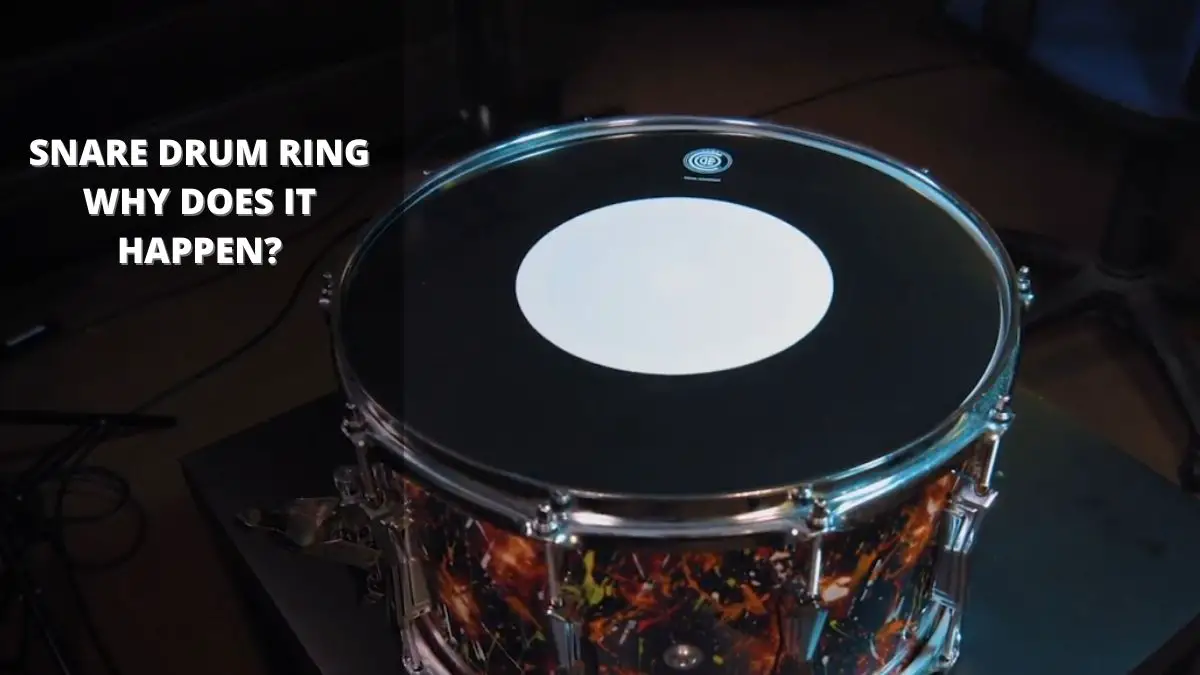A snare drum is a percussion instrument that is usually used in the drum set. It is a cylindrical drum with a skin stretched over a metal or plastic frame. The drum is hit with the hand, and the sound it makes is called a snare.
The name comes from the French word for “snare”, casserole. Snare drums are either single or double skinned drums. A single skinned drum is made of one layer of leather stretched tightly over a metal frame.
The drumhead, which is the part that vibrates when struck, sits on top of the cloth. They are usually played with the hands, but they can also be played with a mallet. A snare drum’s main purpose is to produce a sound when it is hit or shaken.
A snare drum is used to produce a steady, percussive beat that supports the main melody in a song. The purpose of the snare drum is to create a rhythmic “thumping” sound that is used in many different styles of music, including rock, country, and funk. It is also used to produce a call and response feel between the lead instruments of the band.
What makes a snare drum ring?
Snare drums are one of the most commonly used percussion instruments in music. There are many factors that contribute to the sound of a snare drum, here are a few important ones to focus on:
- The shell– The shell of a snare drum is the part that forms the inside of the drum. It is made from wood or metal, and it has a hole in it to hold the head of the drum.
- The head– The head is the part of the drum that sits on top of the shell. It can be made from a variety of different materials, such as plastic, metal, or wood.
- Bearing surfaces– The head of the drum is held in place by bearing surfaces, which are the surfaces that make contact with the skin of the drum. The bearing surfaces can be made from a variety of different materials, such as plastic, metal, or wood.
- Wires– Wires can be used to attach the drum to the frame, and they are used by people who play percussion instruments such as timpani.
Other factors that contribute to the sound of a snare drum, include its size, shape, and construction.
What are some ways to avoid ringing on a snare drum?
One of the most common problems drummers face is ringing on their snare drum. There are a variety of ways to avoid this issue, and some are more effective than others.
Here are some tips for avoiding snare drum ringing:
- Install a properly fitting snare drum head. A good head will minimize the amount of sound that is transmitted to the shell and can also provide better tone quality.
- Lubricate your snare drum regularly. This will help reduce friction and make it easier to play.
- Use a soft mallet when striking the drumhead. Hard hitters can cause more wear on the head and start to ring sooner.
- Use dampeners to remove those ringing overtones. The rings sit atop your batter head on each drum, eliminating most of the overtones generated from a drum head.
- Learn how to tune your snare drum correctly. Improper tuning can lead to accidental overtones that cause ringing.
Why is my snare drum rattling?
Even though commonly used percussion instruments, they can also be susceptible to rattling and other noises.
There are a few reasons why your snare drum might be rattling.
- One common cause is a loose wire that has come loose from the snare drum head. This can happen when the wire is frayed or when it has been damaged in some way. If the wire is loosely attached, it can vibrate when the drum is played.
- Another reason can be defective hardware, a loose wire, in this case, a loose cable on the snare drum head. If you notice that the wires are fraying or you can see where they are coming from, then it is likely a loose wire and needs to be replaced.
- The third cause can be worn or poorly fitted drumheads. Sometimes the snare drum head can get loose and will not stay on the drum when you play it. This is caused by adjusting the tension of the head, which typically is done through a counter-clockwise turn of a knob.
- Another reason is the loose or missing screws on the snare drum’s hardware, which holds the drumhead in place. If you notice that the screws are missing or loose, then it is likely a loose screw and needs to be replaced.
- A rattling snare drum can be also due to the due to movement of the head during play, the tension of the fiberglass or natural rubber shell and head may have been disturbed.
- And finally, the drumstick or mallet may not be hitting the right spot on the head, causing a vibration. If you’re experiencing rattling or other noises from your snare drum, it’s best to get it checked out by a professional musician or instrument technician.
Why do snare drums buzz?
Snare drums buzz because of the vibration of the drumhead. This vibration creates a sound that is similar to a bee or wasp. The most common reason for buzzing is a loosehead. When the head is loose, it can not transmit the vibration to the drum body correctly. The sound is then trapped internally and causes a buzz. This can cause a very loud buzzing sound.
Conclusion
Hence, we have found that there are a few reasons why your snare drum might be ringing. It could be that the snares are too tight, the batter head is too loose, or there is something caught in the drum.
By adjusting the tuning and checking for obstructions, you should be able to stop your snare drum from ringing.


